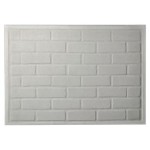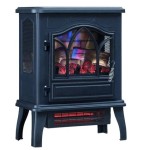Osburn Fireplace Inserts: A Comprehensive Overview
Osburn fireplace inserts represent a significant segment of the residential heating market, offering an alternative to traditional wood-burning fireplaces by providing increased efficiency, improved safety, and reduced emissions. These inserts are designed to slide into an existing fireplace opening, transforming it into a more effective and environmentally conscious heating appliance. This article delves into the features, benefits, models, and considerations surrounding Osburn fireplace inserts, offering a comprehensive understanding of this heating solution.
The primary function of an Osburn fireplace insert is to enhance the heating capabilities of a fireplace. Traditional open fireplaces are known for their inefficiency, often drawing warm air out of a home while radiating minimal heat back into the living space. Osburn inserts address this issue by creating a closed combustion system. This system allows for more complete burning of the wood, extracting a greater percentage of its energy as heat. The result is a substantial increase in heat output and a reduction in wasted fuel.
Increased Heating Efficiency
One of the most compelling reasons for investing in an Osburn fireplace insert is the dramatic improvement in heating efficiency. Open fireplaces can have efficiency ratings as low as 10-20%, meaning that the vast majority of the heat generated escapes up the chimney. In contrast, Osburn inserts are designed to achieve efficiency ratings between 70% and 80%, or even higher, depending on the specific model and fuel type. This translates to a significant reduction in fuel consumption and lower heating costs. The closed combustion system within the insert allows for precise control over airflow, optimizing the burning process and maximizing heat extraction. Features such as secondary air injection and catalytic combustors further enhance efficiency by burning off gases and particles that would otherwise escape as smoke.
The heat generated by an Osburn insert is distributed into the living space through convection and radiation. Convection involves the circulation of air around the firebox, which is then heated and circulated back into the room. Many Osburn inserts are equipped with blowers that actively circulate the heated air, improving the distribution and reach of the heat. Radiation, on the other hand, refers to the direct transfer of heat from the insert's surface. The combination of convection and radiation provides a more consistent and comfortable heating experience compared to the uneven heat distribution of an open fireplace.
Furthermore, the increased efficiency of an Osburn insert can significantly reduce reliance on central heating systems, particularly during shoulder seasons when temperatures fluctuate. By providing a supplemental heat source, the insert can help lower the demand on a furnace or heat pump, resulting in energy savings and reduced environmental impact.
Enhanced Safety Features
Beyond efficiency, safety is a paramount consideration when evaluating fireplace inserts. Traditional fireplaces pose inherent safety risks, including the potential for uncontrolled fires, creosote buildup in the chimney, and the escape of dangerous gases like carbon monoxide. Osburn inserts are engineered with multiple safety features to mitigate these risks.
The closed combustion system of an Osburn insert significantly reduces the risk of uncontrolled fires. The firebox is sealed, preventing embers from escaping and minimizing the risk of sparks igniting nearby materials. The controlled airflow within the insert also helps to maintain a stable and predictable burn, reducing the likelihood of flare-ups or excessive smoke production.
Creosote buildup is a common concern with wood-burning appliances, as it can lead to chimney fires. Osburn inserts are designed to minimize creosote formation through more complete combustion. By burning wood more efficiently, the insert reduces the amount of unburned particles and gases that contribute to creosote accumulation. Regular chimney inspections and cleanings are still essential, but the reduced creosote production can help to extend the intervals between cleanings and lower the risk of chimney fires.
Carbon monoxide (CO) is a colorless, odorless, and highly toxic gas that can be produced by incomplete combustion. Osburn inserts are designed to minimize CO emissions through efficient burning and a sealed combustion system. However, it is crucial to install a CO detector in the home to provide an early warning in the event of a CO leak. Proper installation and regular maintenance are also essential for ensuring the safe operation of the insert.
Many Osburn inserts also incorporate safety features such as over-temperature protection and automatic shut-off mechanisms. These features are designed to prevent overheating and other potentially hazardous conditions, further enhancing the safety of the appliance.
Diverse Model Options and Considerations
Osburn offers a range of fireplace insert models to suit different heating needs, aesthetic preferences, and installation requirements. These models vary in size, heat output, fuel type, and features, allowing homeowners to choose an insert that is best suited for their specific circumstances. Understanding the different options and considerations is essential for making an informed decision.
Osburn offers both wood-burning and gas-burning inserts. Wood-burning inserts provide a traditional heating experience with the ambiance of a wood fire. They are typically more powerful in terms of heat output and can be a cost-effective heating solution for homeowners with access to affordable firewood. Gas-burning inserts, on the other hand, offer greater convenience and ease of use. They can be ignited with the push of a button and require minimal maintenance. Gas inserts are also cleaner-burning than wood inserts, producing fewer emissions.
The size and heat output of the insert should be carefully matched to the size of the space being heated. An undersized insert will not be able to adequately heat the room, while an oversized insert may produce excessive heat and lead to discomfort. Osburn provides specifications for each model, including the recommended heating area and BTU output. Consulting with a qualified installer or dealer can help to determine the appropriate size and heat output for a particular home.
Installation is a critical aspect of ensuring the safe and efficient operation of an Osburn fireplace insert. Improper installation can compromise the safety of the appliance and reduce its heating performance. It is highly recommended to have the insert installed by a certified professional who is familiar with local building codes and regulations. The installation process typically involves preparing the existing fireplace opening, installing a flue liner, connecting the insert to the chimney, and testing the appliance to ensure proper operation.
Regular maintenance is also essential for keeping an Osburn insert in good working order. This includes cleaning the firebox, inspecting the door seals, and ensuring that the chimney is free of obstructions. Periodic inspections by a qualified technician can help to identify and address any potential problems before they become major issues.
The cost of an Osburn fireplace insert can vary depending on the model, fuel type, and installation costs. While the initial investment may be significant, the long-term benefits of increased heating efficiency, reduced fuel consumption, and enhanced safety can make it a worthwhile investment for many homeowners.
Choosing the right Osburn fireplace insert requires careful consideration of factors such as heating needs, aesthetic preferences, budget, and installation requirements. By understanding the features, benefits, models, and considerations surrounding Osburn inserts, homeowners can make an informed decision and enjoy the warmth and comfort of a more efficient and environmentally conscious heating solution.
The availability of different styles and finishes also allows homeowners to select an insert that complements their home décor. From traditional cast iron designs to modern stainless steel finishes, Osburn offers a variety of options to suit different tastes. The aesthetic appeal of an Osburn insert can enhance the ambiance of a living space, creating a cozy and inviting atmosphere.
In summary, Osburn fireplace inserts offer a compelling alternative to traditional fireplaces, providing significant improvements in heating efficiency, safety, and environmental performance. By carefully considering the various models and options available, homeowners can select an insert that meets their specific needs and enhances the comfort and value of their home.

Wood Inserts Osburn

Fireplaceinsert Com Osburn 1800 Fireplace Insert

Inserts Wood Osburn 2200 Insert With Blower Ob02201

Wood Inserts Osburn

Osburn Matrix 2700 Wood Insert

Wood Inserts Osburn

Osburn Matrix Wood Burning Insert Fireplace Inserts

Osburn 1600 Insert Fireplace Wood Burning At Osburnwoodstoves Com

Wood Inserts Osburn

Wood Inserts Osburn
Related Posts








